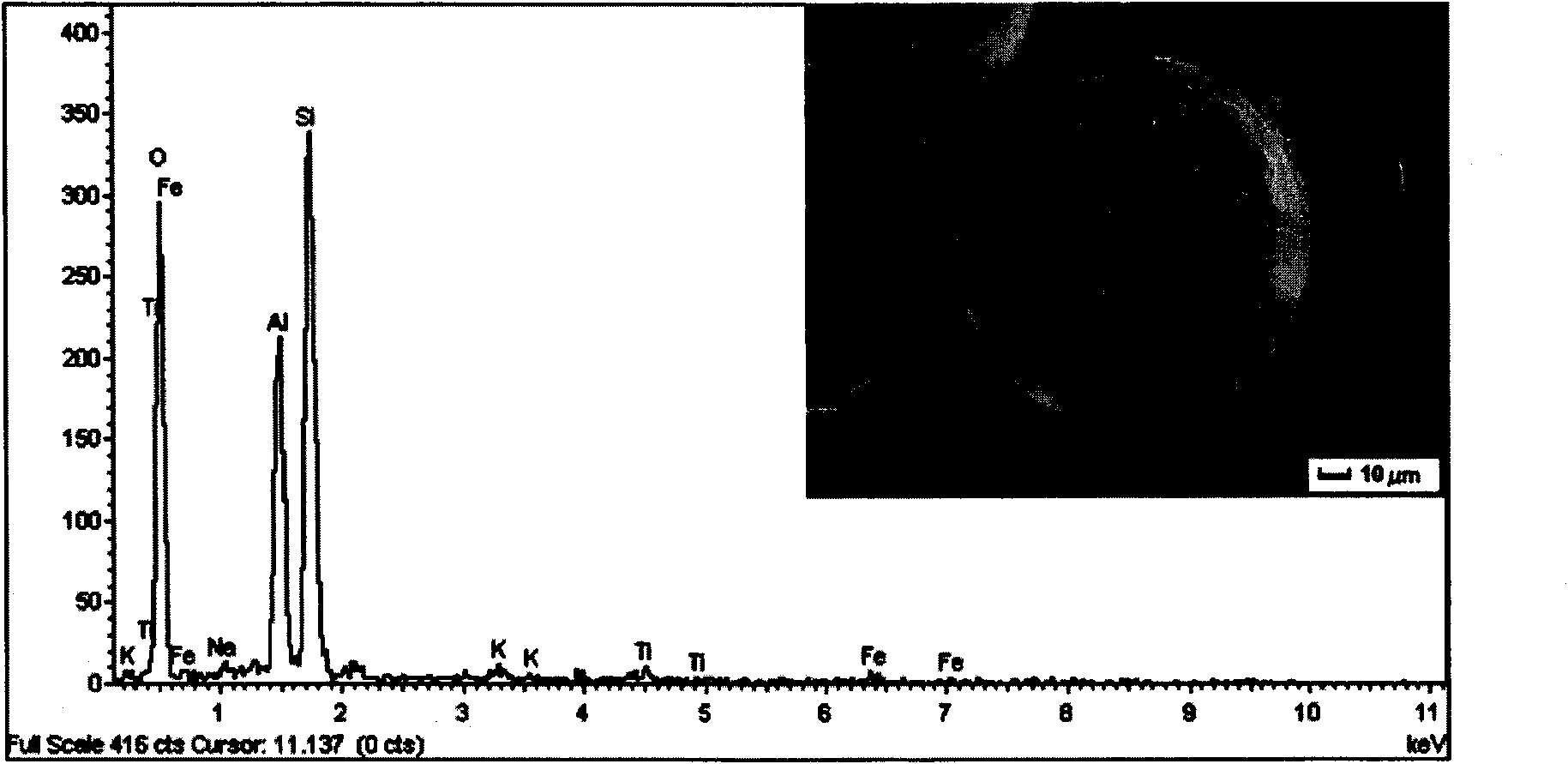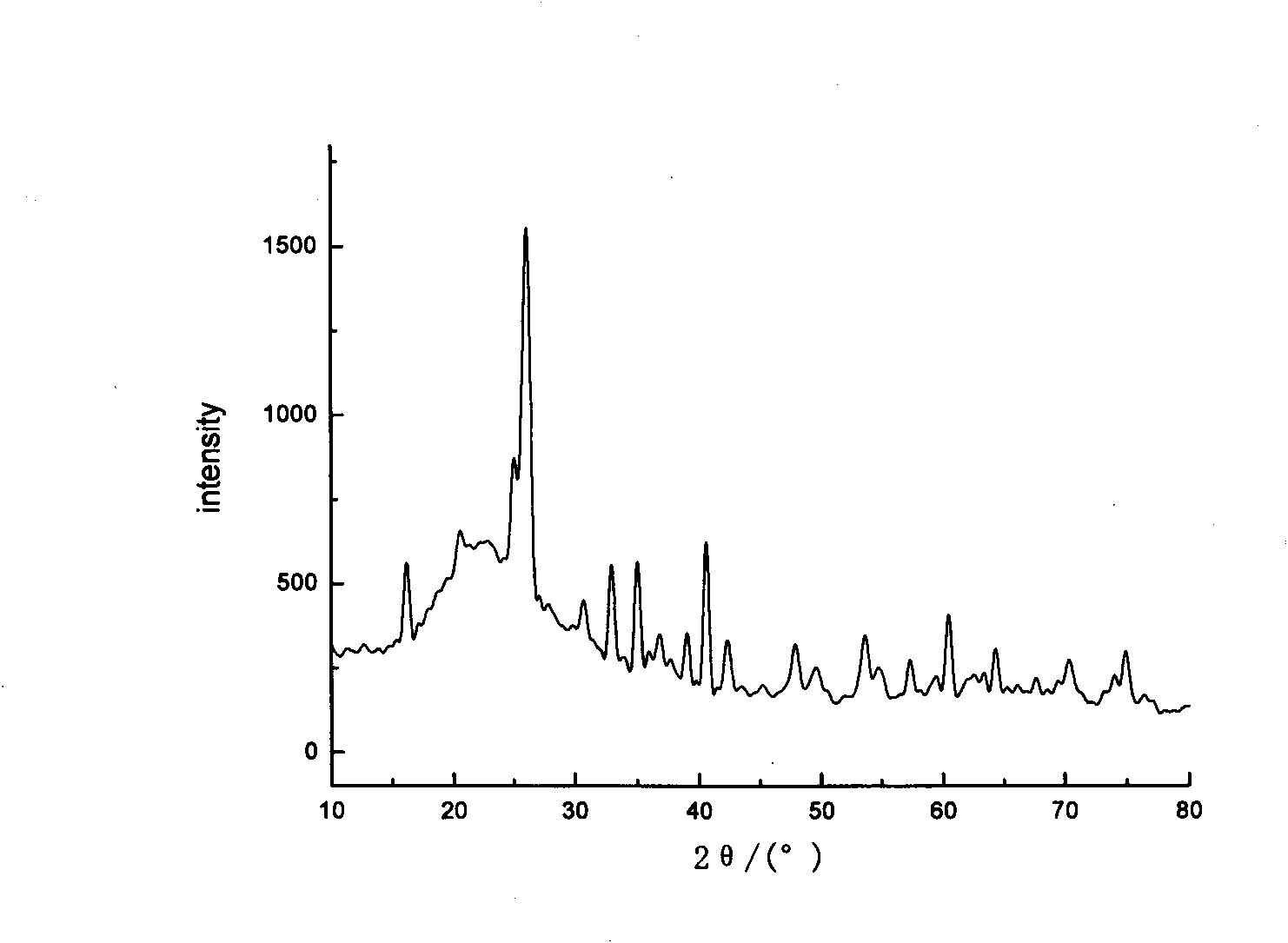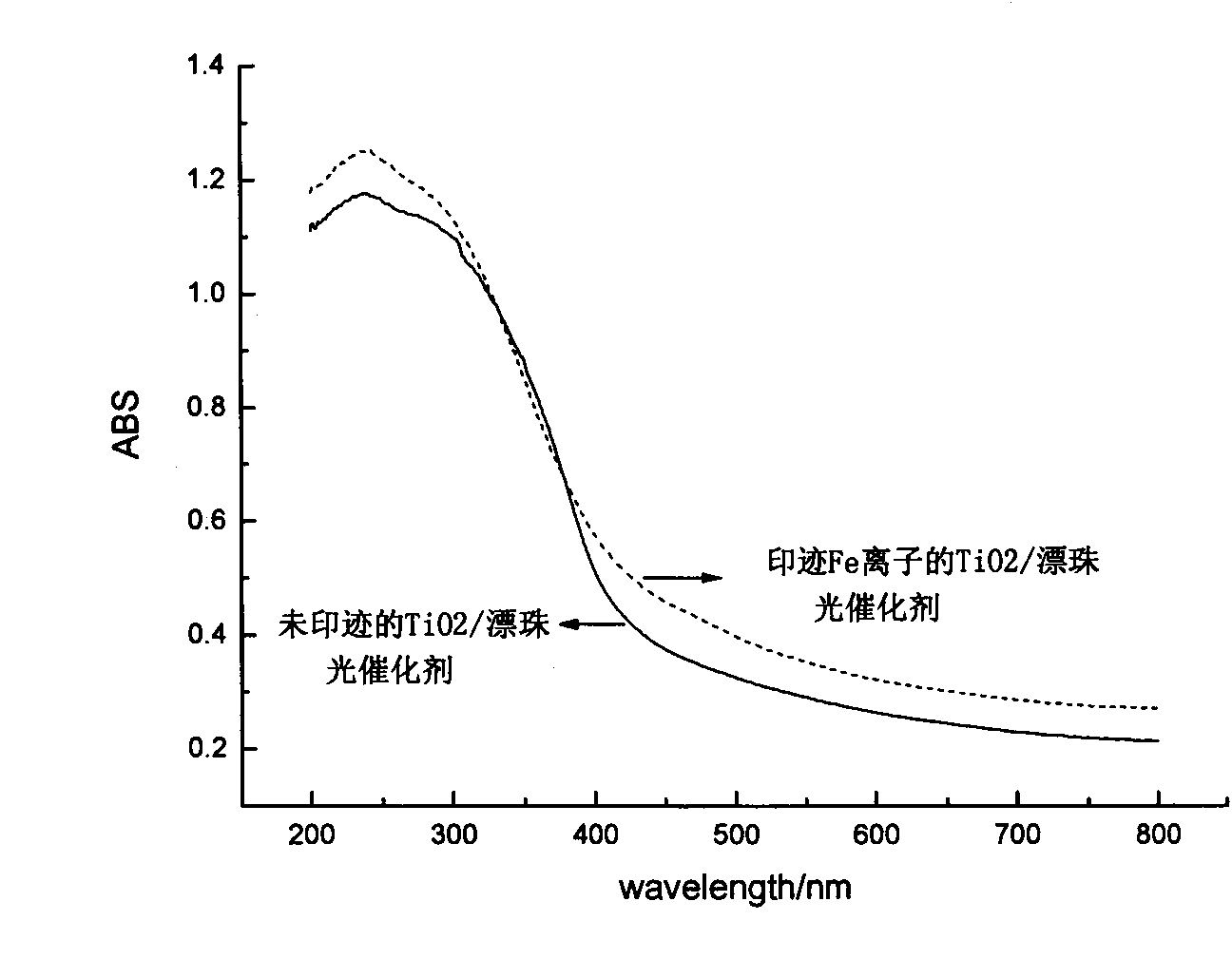Method for preparing ion imprinting supported composite photocatalyst
A technology of ion imprinting and photocatalysis, which is applied in chemical instruments and methods, organic compound/hydride/coordination complex catalysts, physical/chemical process catalysts, etc., can solve problems such as drug resistance and life-threatening threats. Achieve the effects of improving light energy utilization rate and recovery rate, easy treatment, and improving separation efficiency
- Summary
- Abstract
- Description
- Claims
- Application Information
AI Technical Summary
Problems solved by technology
Method used
Image
Examples
Embodiment 1
[0016] Example 1: (1) Purchase fly ash floating beads (Pingdingshan Yaomeng Power Plant), and obtain activated floating beads through rinsing, acidification, roasting, etc.; 45mL of tetrabutyl titanate and ethanol in a volume ratio of 1: 4 Mix and stir the solution at a constant speed for 30 minutes, then dropwise add 45 mL of a mixture containing concentrated hydrochloric acid, distilled water and absolute ethanol at a volume ratio of 1:15:200, and stir quickly until it is in the form of a sol, that is, the prepared TiO 2 Sol; immerse 3.0g of pretreated activated floating beads into TiO 2 In the sol, stir at a constant speed until it becomes uniform to gel, age at room temperature for 12 hours, calcine in air atmosphere, raise the temperature to 500 ° C, and keep it for more than 4 hours, and naturally cool to room temperature to obtain TiO 2 / floating bead-supported photocatalyst.
[0017] (2) 1.0g TiO obtained in the above step (1) 2 / floating bead loaded photocatalyst ...
Embodiment 2
[0019] Embodiment 2: carry out by the same step of embodiment 1 preparation process, difference is to get three groups (Co(NO 3 ) 2 , Fe(NO 3 ) 2 , Pb(NO 3 ) 2 ) different transition metal salt solutions to prepare different imprinted catalysts, investigate the impact of different transition metal ions on the activity of imprinted photocatalysts, and investigate the activity of photodegradation of ciprofloxacin antibiotic wastewater according to (3) steps in Example 1. The results showed that the order of photodegradation activity of the prepared transition metal ion imprinted photocatalyst was Fe(NO 3 ) 2 >Co(NO 3 ) 2 >Pb(NO 3 ) 2 .
Embodiment 3
[0020] Embodiment 3: carry out by the same step of embodiment 1 preparation process, difference is to get three groups (FeCl 2 , Fe(NO 3 ) 2 , Fe(SO 4 ) 2 ) different anion iron salt solutions to prepare different imprinted catalysts, investigate the influence of different anions on the activity of imprinted photocatalysts, and investigate the activity of photodegradation of ciprofloxacin antibiotic wastewater according to (3) step in Example 1. The results show that the prepared FeCl 2 Imprinted photocatalysts work best.
PUM
| Property | Measurement | Unit |
|---|---|---|
| concentration | aaaaa | aaaaa |
Abstract
Description
Claims
Application Information
 Login to View More
Login to View More - R&D
- Intellectual Property
- Life Sciences
- Materials
- Tech Scout
- Unparalleled Data Quality
- Higher Quality Content
- 60% Fewer Hallucinations
Browse by: Latest US Patents, China's latest patents, Technical Efficacy Thesaurus, Application Domain, Technology Topic, Popular Technical Reports.
© 2025 PatSnap. All rights reserved.Legal|Privacy policy|Modern Slavery Act Transparency Statement|Sitemap|About US| Contact US: help@patsnap.com



